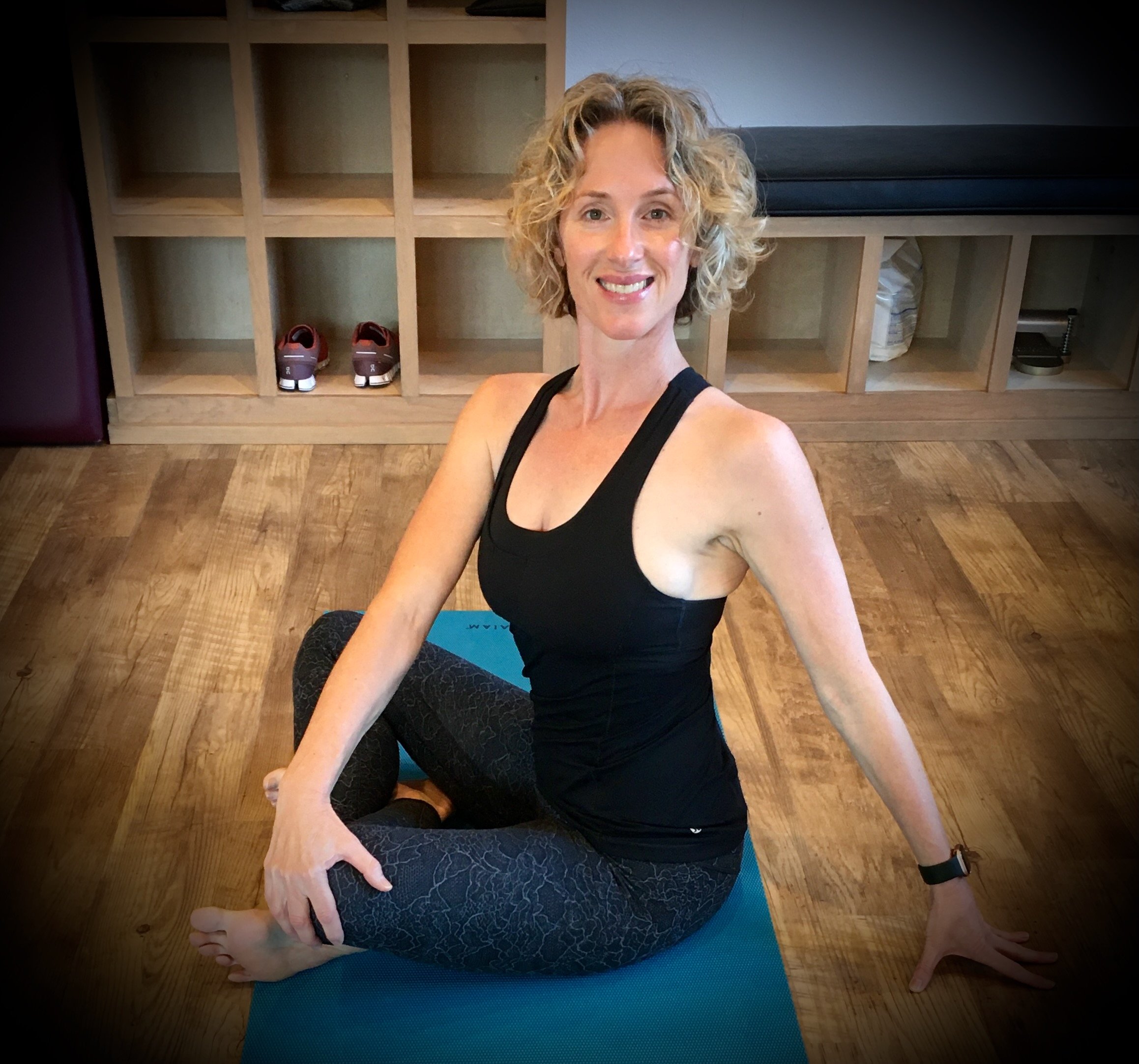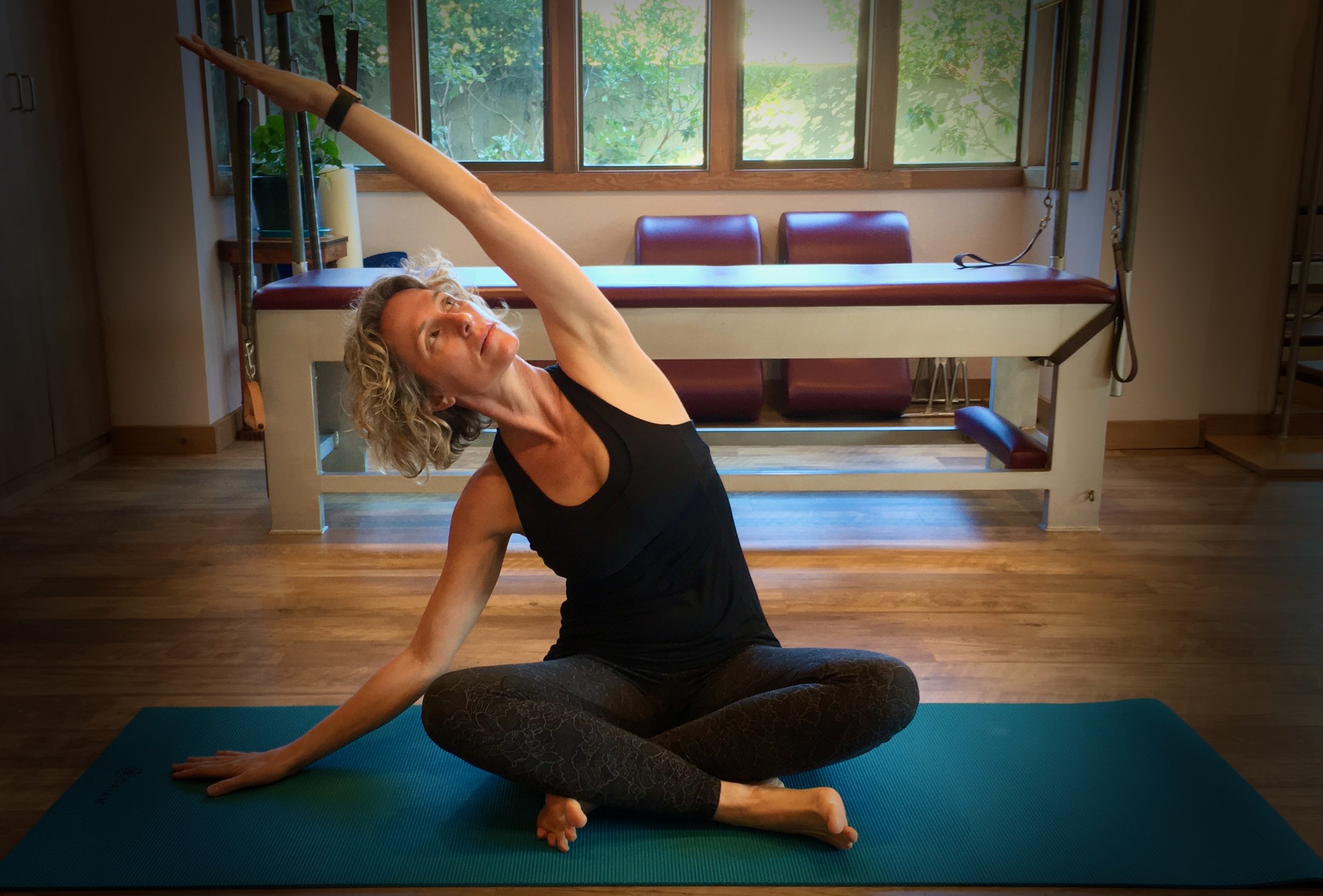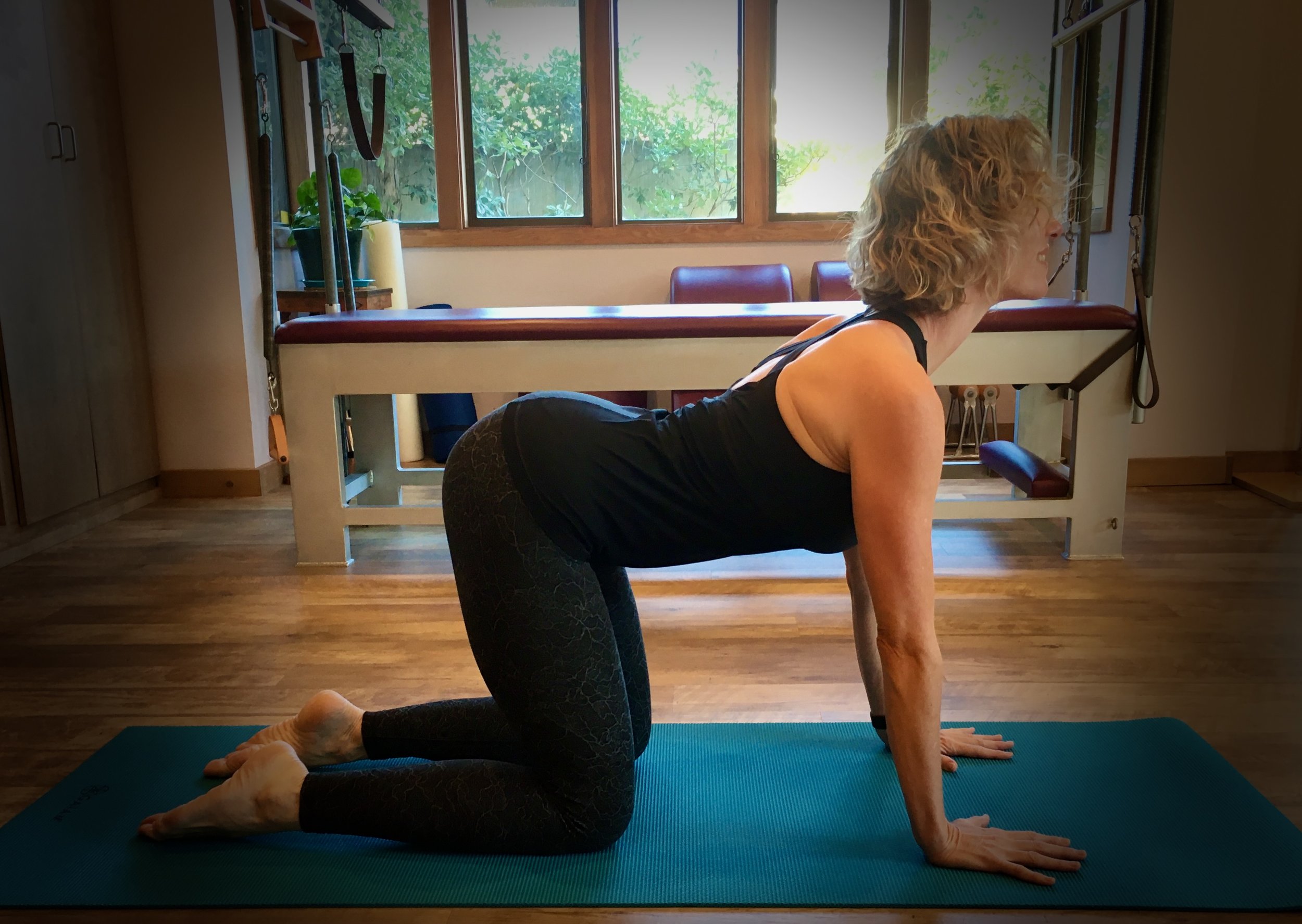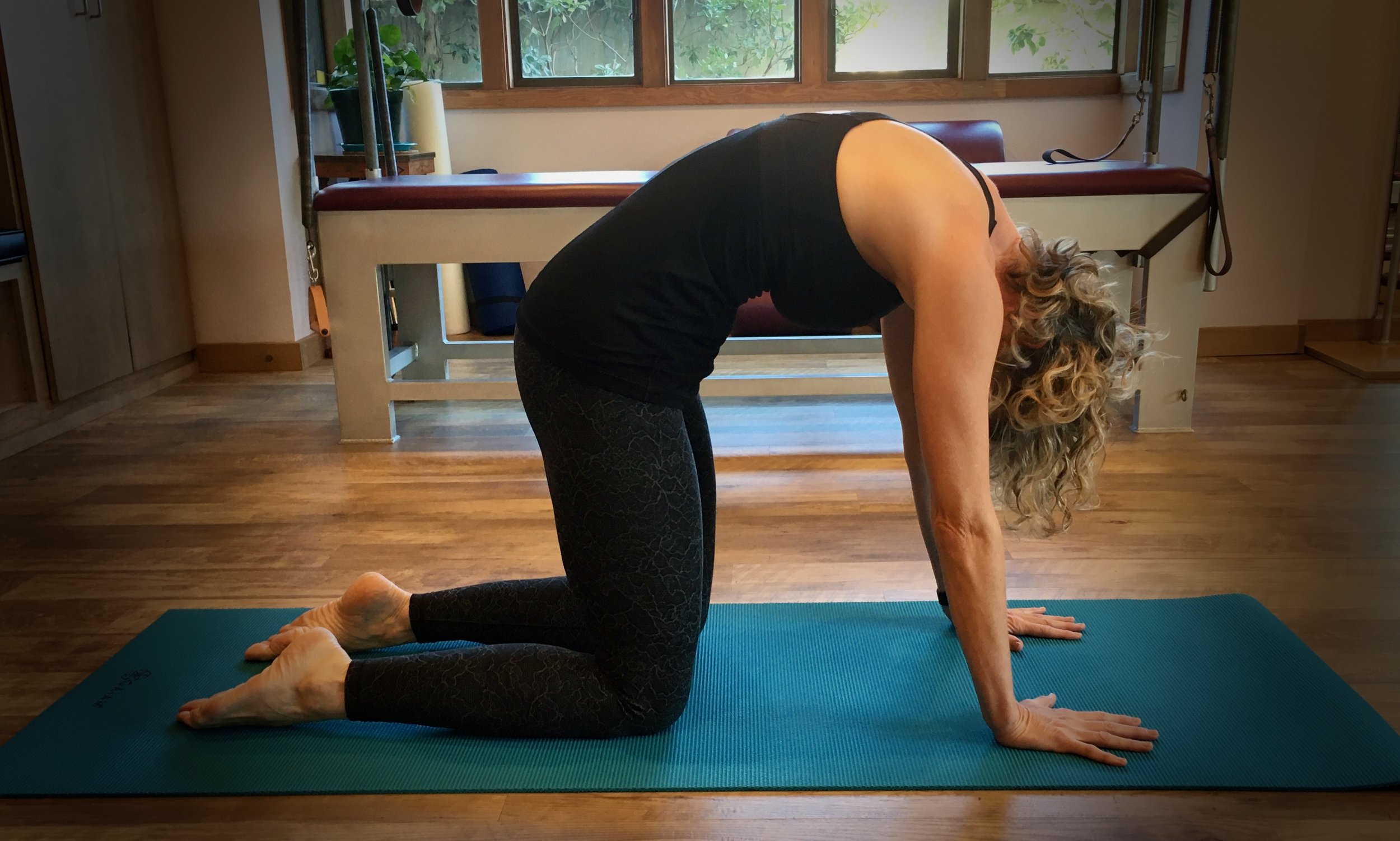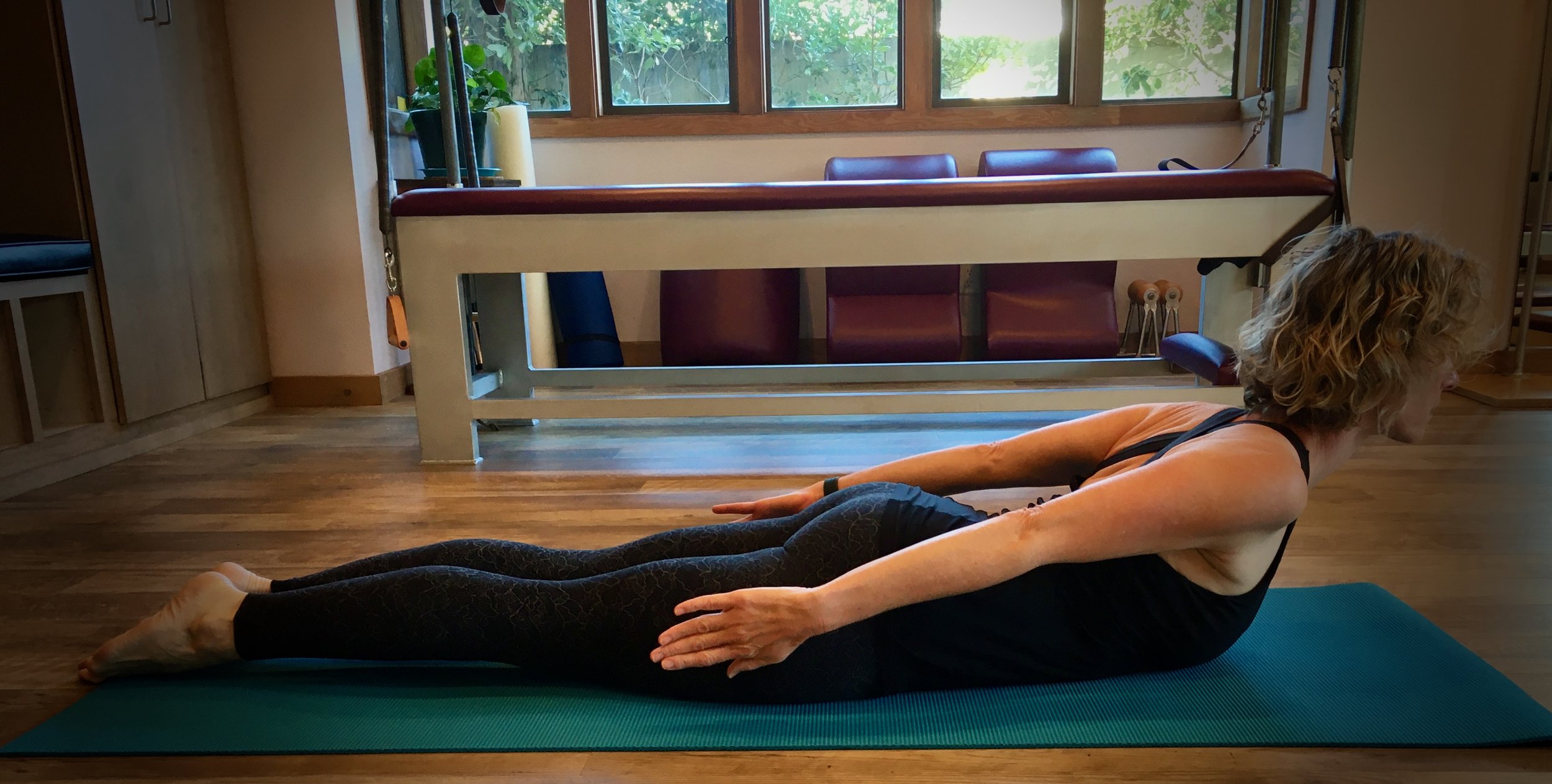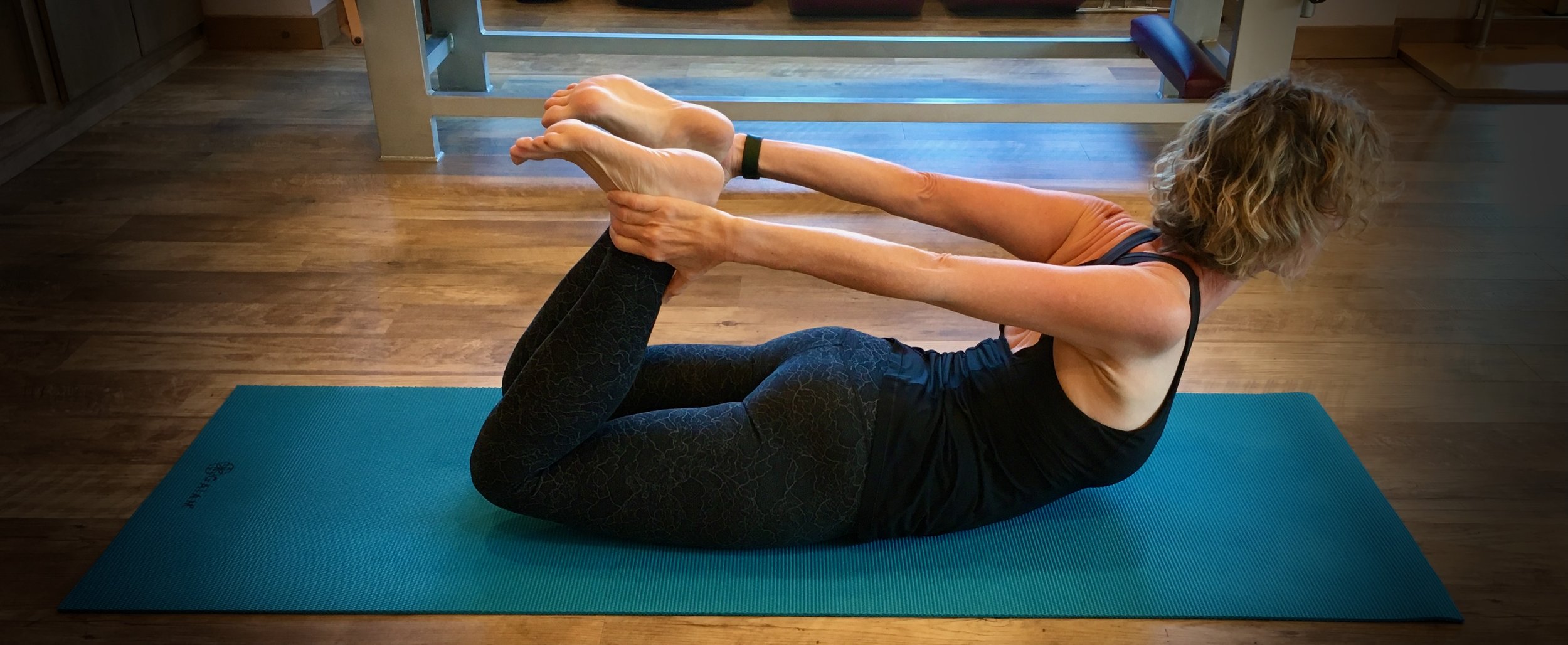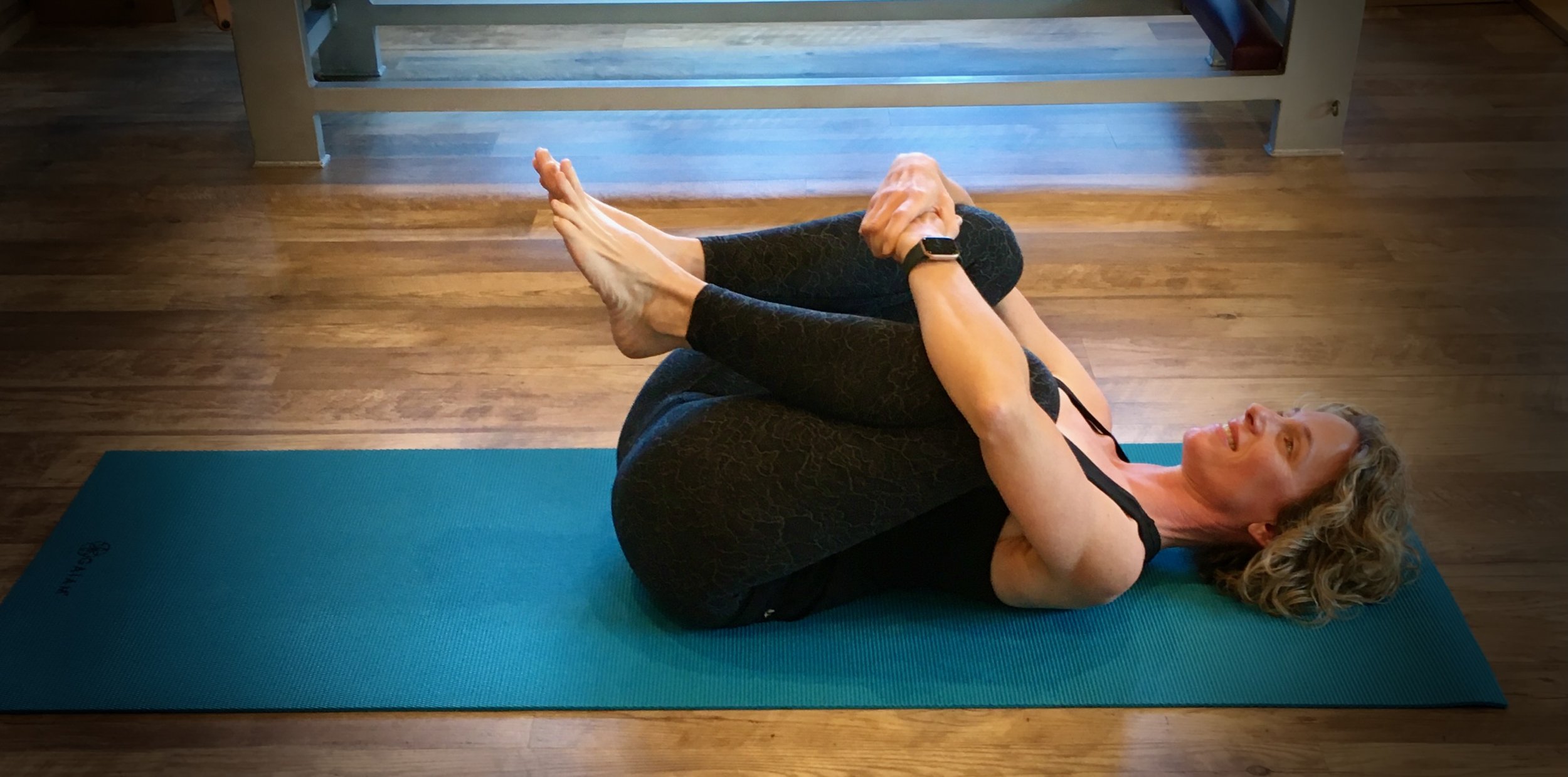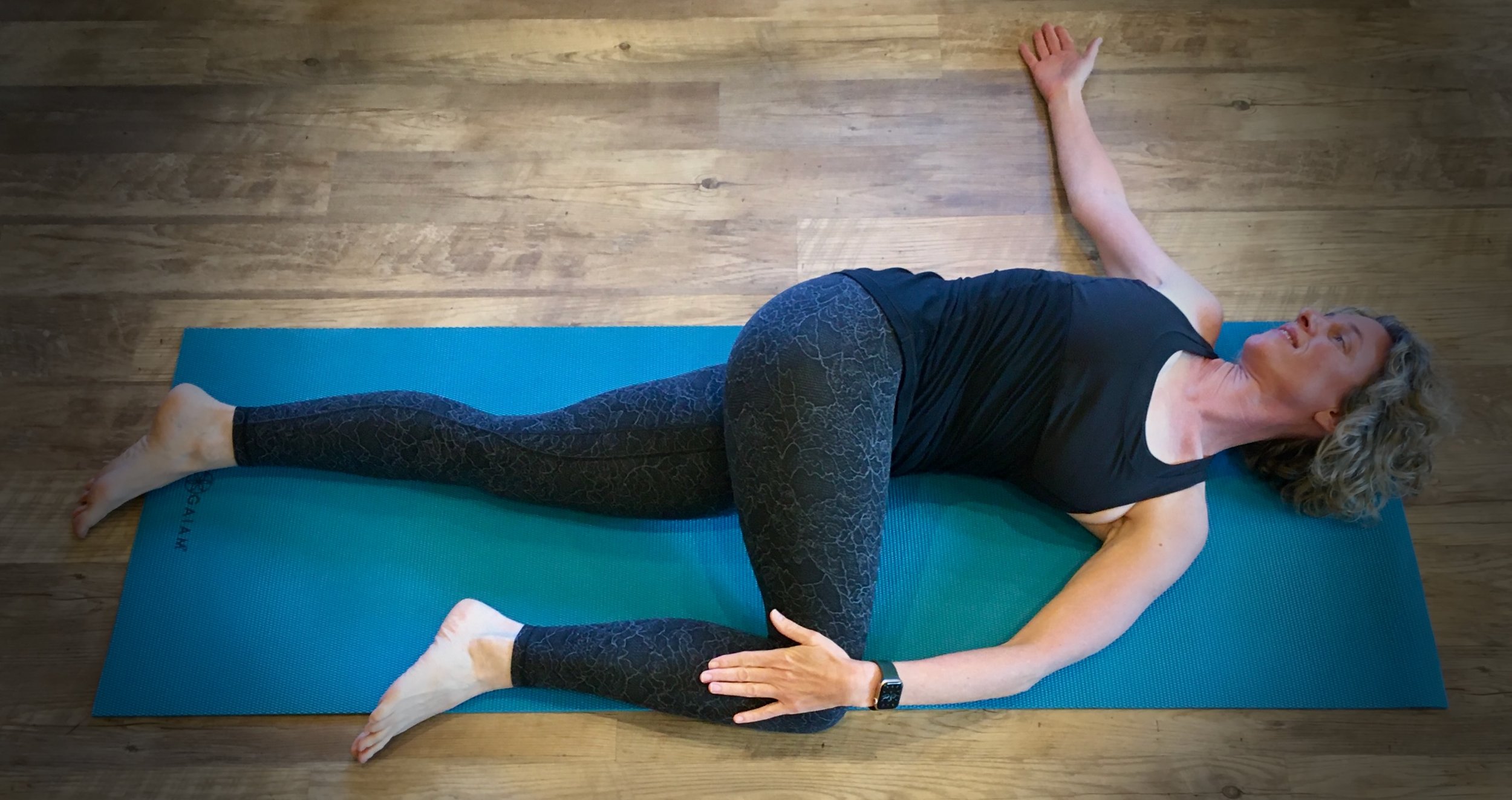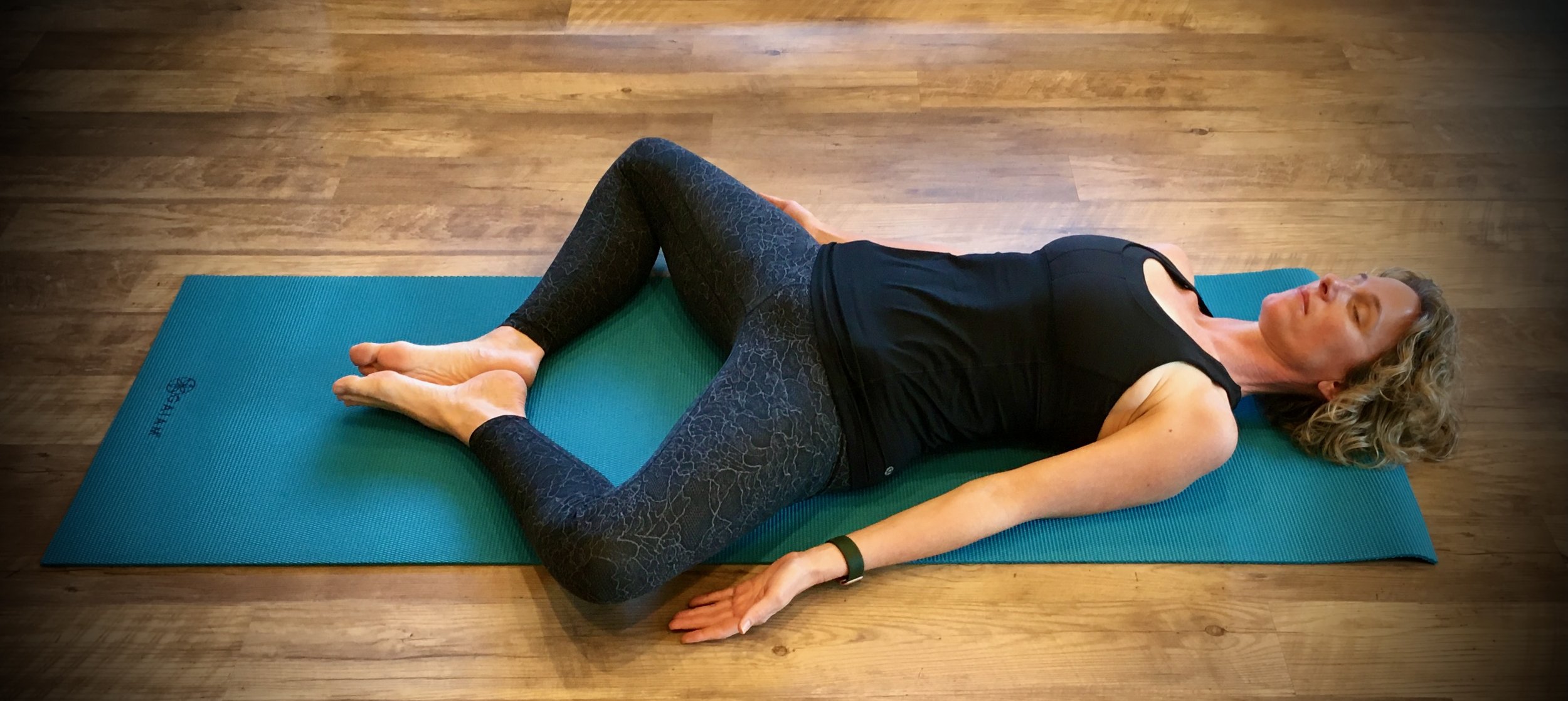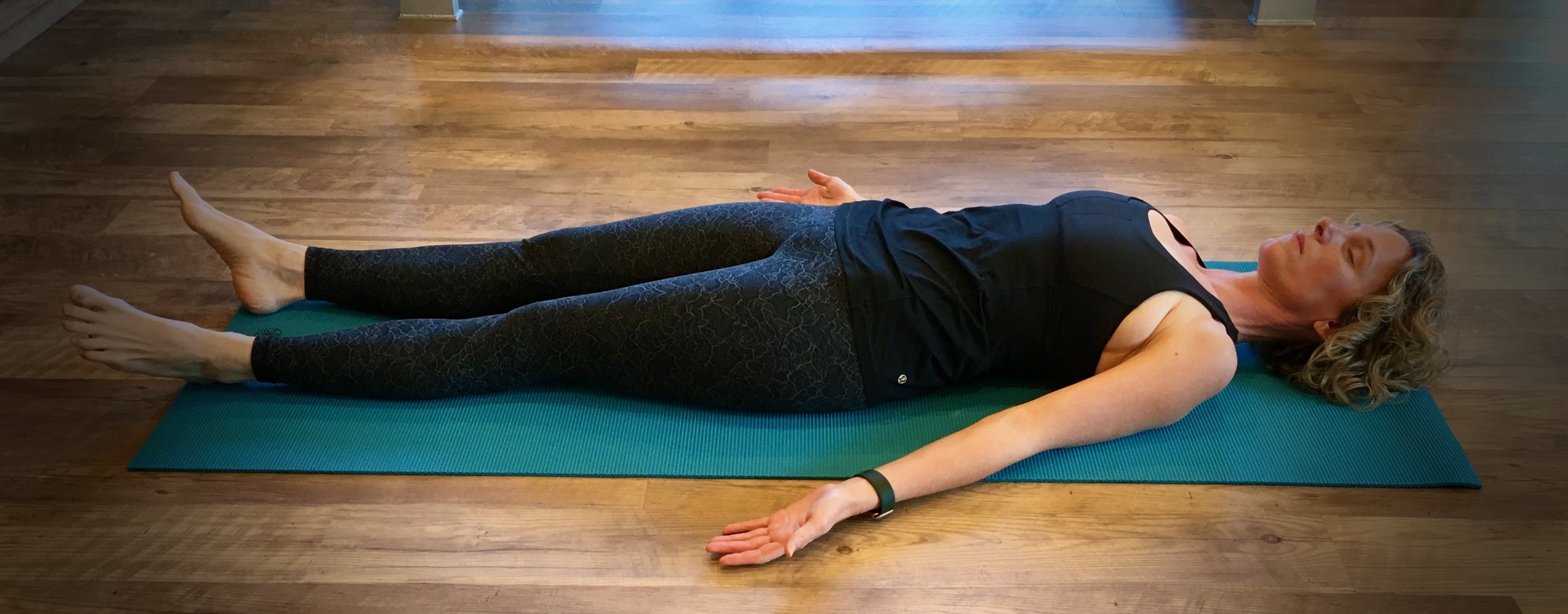Manage Your IBS Symptoms with Yoga—Poses to Calm Your Belly and Your Mind
When I eat the wrong thing, eat too much, or feel extra stressed, my IBS Symptoms flare up. And, over the holidays, I did a lot of all of those things. This year, however, instead of taking to my bed or curling up on the bathroom floor, I had an awesome new tool in my toolbox—yoga! I discovered yoga thanks to my amazing daughter and, since I started practicing yoga regularly, I have seen many benefits to my overall health and well-being—including significant benefits to my IBS symptoms in particular. When a recent clinical study confirmed, “Yoga may be as effective as pharmacotherapy, cognitive-behavioral therapy, exercise, and the low FODMAP diet to reduce IBS symptoms, symptoms of anxiety and depression, and stress in patients with IBS,” I was convinced yoga should be considered an important part of managing IBS.
There are a few yoga poses, in particular, that are calming to your gut and that’s what I’m sharing with you here. Don’t worry, you don’t have to find a yoga studio and sign up for classes right away, just follow the guidance in this article to add some yoga moves to your day and you might just find you feel the benefits—and you’re hooked!
My friend Alexandra Edwards is an amazing human being and practitioner of movement medicine and owner of Monterey Bay Contrology in Monterey, California. Ali was kind enough to sit for pictures of some of the poses that are good for your gut so you can see exactly what you’re going for. Whether you’re having IBS symptoms or not, I hope this article inspires you to give yoga a try.
Seated side twist (Parivrtta Sukhasana)
Sit down on the floor and cross your legs. Take a deep breath in and lengthen your spine and the sides of the body, then turn and put your right hand on your left knee, and steady yourself with your other hand behind you. Breathe out and gently twist while looking over your left shoulder.
Hold this pose for five slow breaths, then release and repeat on the opposite side.
Focus on drawing your navel towards your spine at the end of each exhalation.
Seated side bend (Parsva Sukhasana)
Sit down on the floor and cross your legs. Start your side stretch by taking a deep breath in and raising your left arm, then exhale and stretch the left arm over to the right, bending into a side stretch and supporting yourself with your right arm. Think of elevating on the left side of your body not collapsing on the right. Hold for five breaths. Repeat on the other side. Look up to the ceiling as shown for a greater stretch.
Cat-cow (Chakravakasana): Cow
Make your way to your hands and knees with your hands under your shoulders and your knees under your hips.
Take a deep breath in, draw your navel to the floor, look up to the ceiling, and exhale. This is the "cow” part of Cat-Cow.
Then go to the “cat” part of Cat-Cow and repeat 5-10 times.
Cat-cow (Chakravakasana): Cat
From the “cow” position, take a deep breath in as you arch your back to the ceiling like a cat stretching. Think of drawing your navel toward your spine as you do this, tuck your tailbone down, open the space between your shoulder blades, and let your head drop. Then go back to the “cow” part of Cat-Cow and repeat 5-10 times. Align the movements of Cat-Cow with your breath: in for cat and out for cow.
Sun salutation (Surya Namaskar)
Sun Salutation is a series of yoga poses performed in a sequence to create a flow of movement. Watch the video below to see the combination of movements that make up the complete sequence.
Start standing up with your toes touching and your heels slightly apart. Take a breath in and raise your arms to the ceiling, exhale, and fold forward touching your hands to the floor
Take another breath in and raise up halfway with your fingertips on the floor or lightly touching your shins. Exhale, and return to forward fold.
Bend your knees, place your hands on the floor below your shoulders, and then step your left leg back into high lunge. Next, step your right leg back so you are in a plank position. Hold this pose for a breath or two or flow right through it to the next part of the sequence.
Bend your knees and go through the following Chaturanga sequence (Chaturanga: from plank position, exhale, lower yourself down to the mat evenly as though doing a push-up, as you breathe in, straighten your arms while leaving your hips on the floor to move into upward facing dog; breath out and move into downward facing dog) hold for a breath, step your left leg forward into a lunge, then step your right leg forward to meet your hands in forward fold at the top of the mat, inhale and stand up lifting your arms toward the ceiling, bring your hands to heart center (prayer) to finish.
Do this same sequence on the opposite side, then do each side again once more. Two full sequences are a great way to stretch and massage your belly.
Locust pose (Salabhasana)
Lie on your stomach with your arms by your sides. Engage your gluteal (butt) muscles and, as you take a breath in, lift your head, upper torso, arms, and legs away from the floor. Don’t lift so high that you feel a pinch in your low back and be sure to tuck your pubic bone/lower abs in.
Exhale and release to the ground. Repeat this pose five times and try to hold each time for five breaths in and out.
Bow pose (Dhanurasana)
Lie on your stomach with your arms by your sides. Bend your knees and take hold of your ankles or feet. (If you can't reach your ankles or feet, you may use a strap or towel.) Engage your back and gluteal (butt) muscles and as you take a breath in, lift your head, upper torso, arms, and legs away from the floor. With strong legs and arms, gently pull on your ankles/feet to create the shape of a bow (like a bow and arrow).
Once you’re in this position, use your breathing to create a rocking motion to stimulate your digestive tract. Inhale to let the upper abdomen expand and exhale to contract. After five inhalations and exhalations (or sooner if you have any discomfort) release to the ground.
Knees-to-chest (Apanasana)
Lie on your back. As you take a breath in, slowly bring both knees to your chest and hug them into your body. You can grasp your wrists or your elbows, whatever is most comfortable. Try to keep your shoulders on the floor. Rock side to side if you like. Hold this position for five breaths.
Reclined spinal twist (Supta Matsyendrasana)
Lie on your back and extend your legs. Take a breath in and, as you breathe out, hug both knees into your chest. Stretch your left leg out, keeping your right leg hugged in. Place your left hand on the outside of your right knee and gently pull it over to the left. Extend your right arm straight out to the right, turn your head to the right. Relax and hold the pose for at least 10 slow breaths. (You can adjust this pose by moving both legs to one side if that’s more comfortable.)
To switch to the other side, slowly come back to center, hug both knees into your chest and repeat on the other side.
Reclining bound angle pose (Supta Baddha Konasana)
Lie down on your back. Place the soles of your feet together and allow your knees to gently fall apart. Focus on breathing from your belly, not your chest. To help with this, you can put one hand on your belly and the other hand on your chest and try to breathe so only the hand on your belly rises.
You may use blankets or pillows to support your knees and make yourself comfortable. Do slow, deep breathing and stay in this pose for five minutes or as long as you are comfortable.
Corpse pose (Savasana)
This could be the best asana of all so don’t skip it!
Lie on your back with your legs and arms extended and slightly spread out. Allow your legs to relax and turn out to the side. Close your eyes. Focus on breathing from your belly, not your chest. To help with this, you can put one hand on your belly and the other hand on your chest and try to breathe so only the hand on your belly rises. Stay in this position for five minutes or more as you relax in this pose.
Come out of this pose slowly by rolling onto your side first and resting in fetal pose (Parsva garbhasana) for a few breaths before coming up to a seated cross-legged position. Rest for a few breaths before standing.
